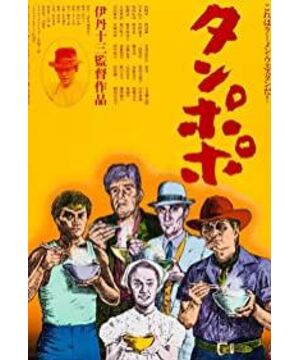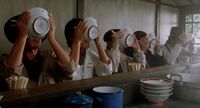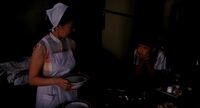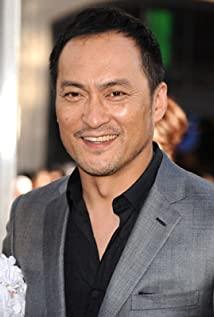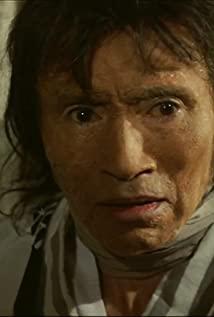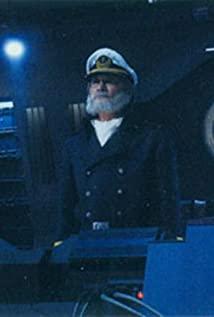Spring is blooming, although I don't want to eat or drink, but I am very interested in Lupian.
Today, I watched a 1985 film "Dandelion Tandem" from the island country. This is the early work of the famous Japanese director Itami Shisan. It is about a group of nosy passers-by who helped a female owner of a ramen shop to revive the family business. Thing.
The story is quite simple, without any ups and downs. But as Itami XIII, who had various dreams back then, contained a large number of private goods in this film, and various bridges that had nothing to do with the main line were interspersed around the film, but it did not affect the viewing experience of the whole film in the slightest. On the contrary, it adds a lot of color. If Itami XIII can remake this film, I believe it will produce a classic of life style that reflects the various aspects of Japanese society.
1
Master study
Teach you how to open a noodle restaurant
When the film comes up: in the rainy night, Gun, the co-driver of the big truck, is learning the correct way to open the ramen. The driver Hei Lang is very angry when he hears it, you kid, crazy late at night! Revenge on society! I quit, stop and eat noodles.
They came to the ramen restaurant called "Lai Laixuan" opened by the single mother Dandelion, but the late-night canteen is not necessarily delicious. Ramen in this shop is really hard to swallow. After inquiring carefully, I found out that the proprietress was a monk halfway through, and her craftsmanship was not good, and the shop was struggling.
Unexpectedly, Hei Lang, the truck driver, is still an old ramen driver. After some great manipulation of dandelion, Heilang decided to accept dandelion as a disciple, so the devil training began!
After unremitting efforts, this small restaurant has finally become a local Internet celebrity, and the name of the shop has also been changed to "Dandelion."
The film not only narrates the story, but also teaches the audience how to cook soup, how to cook noodles, how to receive guests, how to learn from competitors, and even the tricks of stealing recipes.
This film! It's really a cloud teaching material for opening a store!
2
Japanese Ramen
Japanese business card from China
Small noodle restaurants like "Lai Laixuan" in the movie can be seen everywhere in Japan. Currently, most ramen restaurants in Japan are still private independent shops like mom-and-pop shops, with chain brands accounting for only 20%. There are many small shops, and the biggest benefit is that almost every ramen restaurant has its own unique characteristics that have been passed down for generations.
The English raman of "拉面" comes from a Japanese transliteration, and the Japanese kana "ラーメン" is the pronunciation of "拉面" in Chinese. In Japanese, the Chinese character "拉麺" can also be used directly.
For real ramen in China, it is necessary to stretch the noodles. I don't know if it was a real Chinese ramen that was introduced to Japan. But judging from the hand-made or machine-made ramen in Japan, the father of Japanese ramen is not Chinese ramen, but more like Chinese noodles. It is called ramen, and it is more likely that there has been a mistake in person-to-person transmission, which is suspected of being false.
However, in any case, the ramen is from China, which is not fake at all.
3
Ramen evolution history
From Nanjing to Tokyo
According to reports, ramen was first introduced to Japan by the exiled Nanming Confucian scholar Zhu Shunshui in the Ming Dynasty. At that time, Mito Huangmen of the Tokugawa family of the shogunate was the first person in Japan to eat ramen.
But this is just a joke. In the Edo era, when Japanese capitalism was budding, with the rapid economic development, the Japanese catering industry at that time also saw the embryonic form of modern Japanese cuisine.
Back then, there were two types of Japanese noodles (そば in Japanese) that were born and raised: one is soba noodles and the other is udon noodles.
With the advent of the Meiji Era, Japan fully learned from the West, and meat eating gradually became a trend. At the same time, it is more open to other foreigners' food.
In 1873, after Japan and the Manchuria signed the Sino-Japanese Treaty of Peace and Friendship, a large number of laborers from Zhejiang, Fujian, and Guangdong came to ports such as Nagasaki and Yokohama. At the same time, China also began to learn from the West, one after another. Of the international students who travelled east to Japan, they came to Yokohama, Tokyo, Kobe, Sapporo, and Nagasaki. Among these people, there was Sun Yat-sen and Lu Xun.
The place where Chinese people live has formed the Chinatown of Japan—Chinatown. Chinese people love to eat noodles. The original form of Japanese ramen was nurtured from the Chinese noodles in Chinatown.
The first appearance of the three words "Nanjing noodles" in Japanese publications was in the 1884 advertisement of the Hakodate Western Food Restaurant "Yanghexuan". The noodles sold at "Yanghexuan" were based on chicken broth and sprinkled with fragrance. The scallion Jiangzhe Yangchun noodles are named "Nanjing" because they generally refer to Jiangnan in China; the "noodles" in "Nanjing noodles" used the Japanese word そば, which means Japanese-style noodles. The clean style of the "Hakodate Salt Ramen Series" that dominates nowadays officially comes from the "Yanghexuan" Wanyangchun noodles.
The first Japanese ramen restaurant in Japan, specifically for Japanese people, is called "Lailaiken". It is located in Asakusa, Tokyo. It opened in 1910. The owner Ozaki Kanichi was a customs officer in Yokohama. At the time, "Lailaiken" A bowl of "Chinese noodles" sold for only 6 yuan, cheap and good quality, has become a favorite of laborers, flourishing for a while.
Ozaki Kanichi adjusted the soup, using traditional Japanese kelp and bonito as a base, with chicken bones as a soup base, and seasoning with soy sauce. The supplements include char siu, fish plate, seaweed, and then added braised bamboo shoots. Dry, formed the embryonic form of soy sauce ramen.
Marinated bamboo shoots: The Japanese pronunciation of Menma turned out to be "face code". It is made by fermenting young bamboo shoots with lactic acid bacteria. The production method is very similar to the dried bamboo shoots of Tianmu Mountain in Zhejiang. Marinated bamboo shoots are also called shinachiku (支竹). The dried bamboo shoots in Japanese ramen are mainly imported from southern China and Taiwan.
The Japanese tonkotsu ramen that Chinese people see most now is from Hakata in Fukuoka. This thick soup noodles with pork bones is a blend of Kyushu’s small noodle stalls (yatai) "Nanjing Chiryu", Yokohama Chinatown’s "Nanjing noodles", and Nagasaki mixed noodles (ちゃんぽん). Later brands that spread across the world, "Ippudo", "Ichiran Ramen", and "Hakata Ikkyosha" all belong to Hakata Tonkotsu Ramen.
In 1887, the owner of the Chinese restaurant "Sihailou" in Nagasaki, an overseas Chinese in Fujian, Chen Pingshun, used extra ingredients and soup to make a smorgasbord soup-style "Nagasaki mixed noodles", which became a specialty of Nagasaki in the future. . "Nagasaki mixed noodles" and the current Fujian "special lo noodles" are very similar.
Although ramen made great progress during the Meiji and Taisho eras, before World War II, the staple food in Japan was still white rice. Yangchun Baixue could afford white rice, while the lower Liba people could not eat polished rice and also ate brown rice.
During the Showa period, with the continuation of World War II, rice was transported to the front line to support the war machine, and pasta gradually became the daily life of the people. After the end of World War II, the defeated Japan was even more short of food. In 1946, the Americans used cheap wheat flour produced in the United States for disaster relief in Japan, and bread and noodles became widely accepted staple foods at that time.
But the ramen of the year is not the same as it is now. A bowl of ordinary ramen, a clear soup with little water, only a little soy sauce. Even if you can have an egg, you can't even think about the char siu pork and pork bone soup.
Until the 1960s, the dilemma of food shortages in Japan has not been completely improved, and starvation is still commonplace for people in island countries.
4
Instant Ramen
Transform to conquer the world
In 1958, a bankrupt businessman from Ikeda City changed all this.
This person was called Momofuku Ando, who was later the owner of Nissin. He invented a must-have for the otaku-instant ramen (Japanese: インスタントラーメン). The birth of instant noodles not only made ramen counterattack a staple food in Japan, but also The way the earthlings eat has opened a window.
To show respect for China and Japan, Momofuku Ando named his ramen company "Nissin" (the Qing Dynasty is the Qing Dynasty). Nissin Foods Co., Ltd. is Japan's largest instant noodle company.
With the huge social changes in Japan after the war, ramen gradually lost its identity as "Chinese noodles". Since the 1960s in Japan, the economy has taken off, and ramen has not only been regarded as a "national delicacy" by the people of the country, it has also become a window for the world to understand Japanese food.
View more about Tampopo reviews


